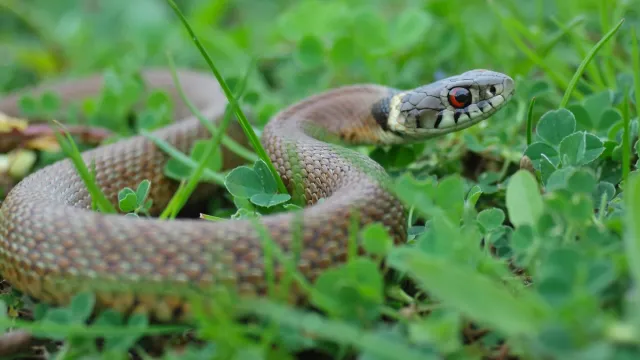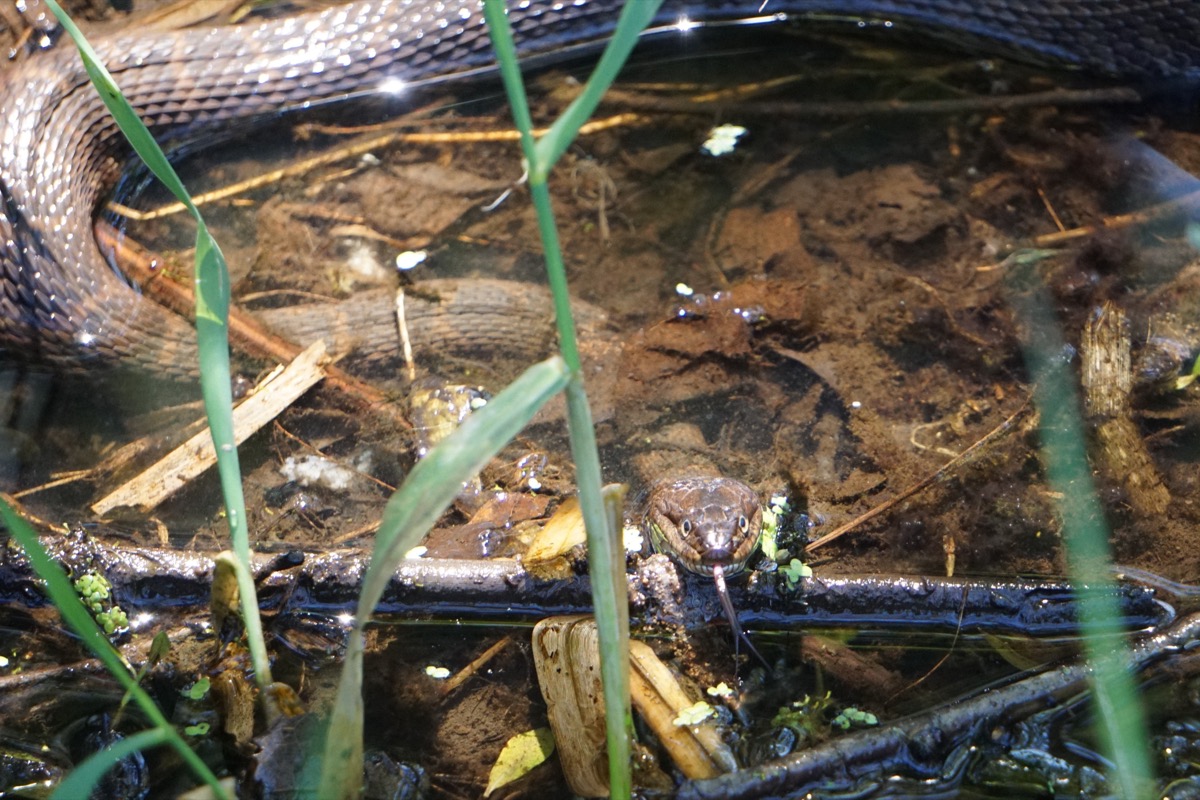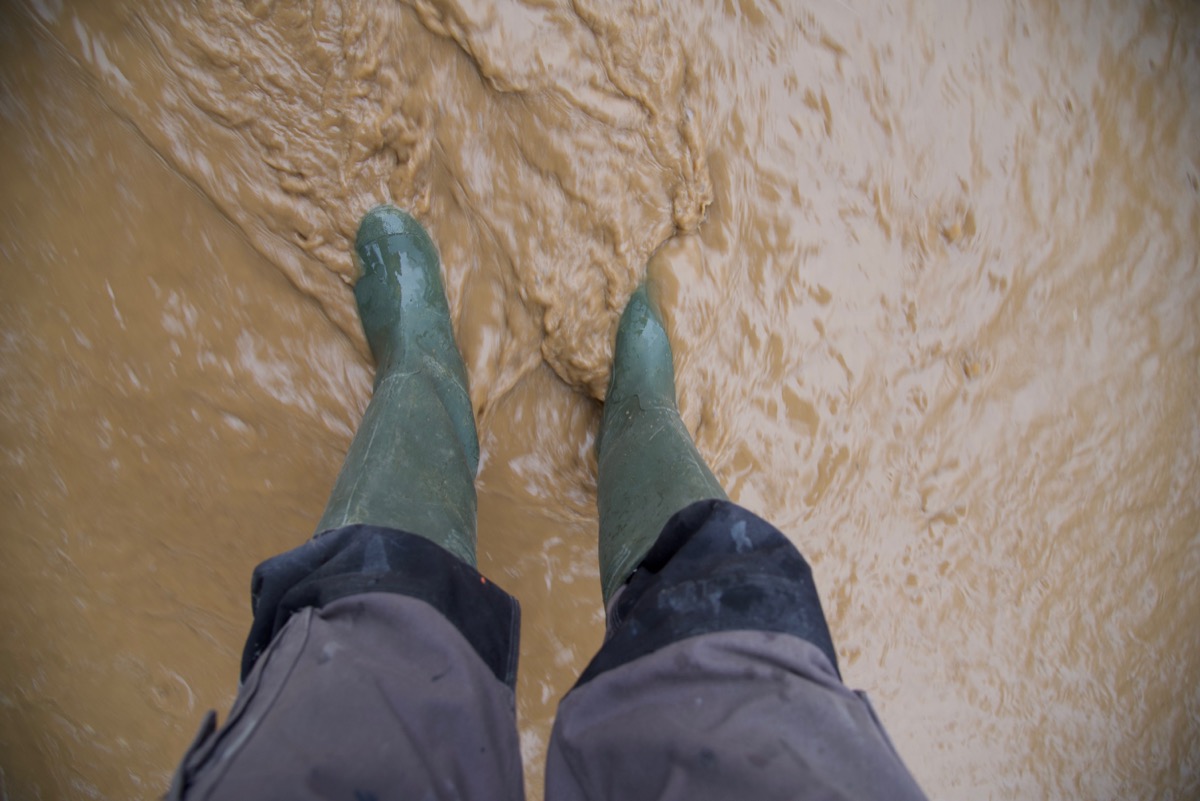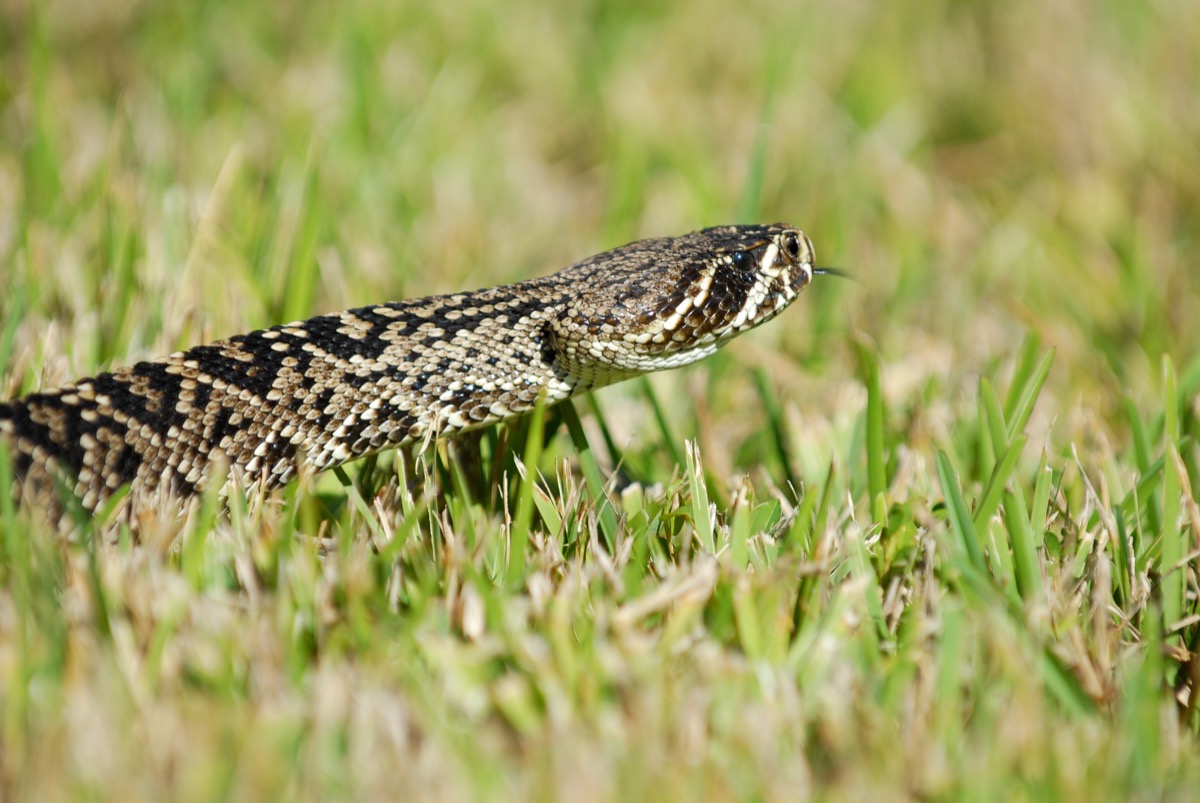This Is When You’re Most Likely to Encounter a Snake, Experts Say

Whether it’s their slithering bodies, their beady eyes, or, more understandably, some species’ potentially lethal venom, many people find themselves terrified at the idea of encountering a snake during the course of their daily activities. Unfortunately for the snake-averse, there’s one particular weather condition that may make you more likely to stumble upon one of these legless reptiles when you’re out and about this summer. Read on to discover the surprising time when you’re more likely to encounter a snake, and what you can do to reduce your risk of being bitten.
RELATED: If You Live in These States, Watch Out for This Highly Venomous Snake.
You’re more likely to encounter snakes after a flood.

While the after-effects of flooding can be devastating, leading to everything from serious health issues to structural damage, snake encounters likely aren’t on most people’s list of worries following a natural disaster like a flood—but they should be.
According to Maureen Frank, PhD, an assistant professor and extension wildlife specialist at Texas A&M AgriLife Extension, snakes are frequently displaced by flooding, which can drive them into damaged buildings and other areas where people might not otherwise assume they would encounter them. And while the vast majority of snakes present little threat, the U.S. is also home to multiple types of venomous snakes whose bites can cause serious health issues or even death to both animals and humans.
For the latest summer safety news delivered straight to your inbox, sign up for our daily newsletter!
If your area has recently flooded, take specific precautions to protect yourself.

If your area has recently experienced flooding, there are particular steps you can take to reduce your chances of encountering a snake or being bitten by one.
Frank recommends wearing protective gear, like leggings or boots that are at least 10 inches high, and gloves, when cleaning up after a storm; using a shovel or tool to lift debris, rather than using your hands; not stepping over piles of debris if you can’t see what’s on the other side; and not reaching overhead to clear debris unless you have a clear visual on what you’re reaching for first, as snakes could be nesting in debris piles.
Snake bites have the highest prevalence during a six-month period each year.

While flooding frequently leads to snake encounters, you’re most likely to be bitten by a snake during a six-month period each year.
According to the United States Department of Agriculture (USDA), the majority of snake bites take place between April and October each year, typically due to greater human activity in nature during this period. The USDA notes that it’s not flooding alone that can drive snakes out of their typical habitats, however; the agricultural authority notes that wildfires often drive snakes from their normal habitats and into closer proximity to humans, leading to increased rates of human encounters.
Certain year-round habits can make your space less habitable to snakes.

Though there’s little you can do to change the likelihood of a flood or other natural disaster in your area, you can take steps to make your property look less welcoming to snakes.
Frank recommends removing debris near your home, trimming vegetation, and sealing any cracks around doors, windows, pipes, or electrical outlets that could allow snakes inside.
RELATED: If You Live Here, Prepare for an Influx of Snakes.